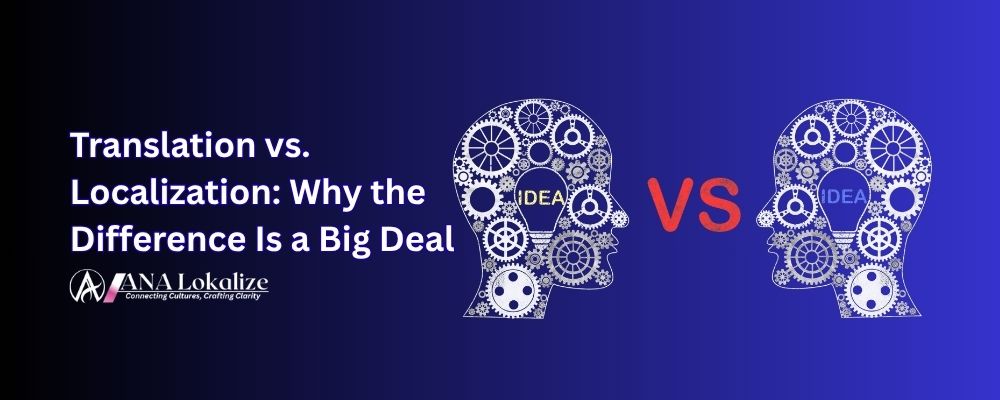How Small Details Shape Global Brands

How Small Details Shape Global Brands
In the world of global branding, success is often determined not just by big campaigns or bold strategies, but by the small details that make a brand feel consistent, authentic, and culturally relevant across markets. From subtle differences in color perception to the nuances of language and cultural references, tiny elements can significantly influence how international audiences perceive a brand. Paying attention to these details ensures that a brand’s identity remains strong, credible, and relatable, no matter where it is experienced.
The Importance of Consistency in Brand Identity
Consistency is a cornerstone of successful branding. It allows audiences to recognize a brand immediately and understand what it represents. However, maintaining consistency across multiple countries and languages is challenging. Small details such as logo placement, typography, iconography, and tone of voice all contribute to the perception of a brand. Even minor inconsistencies, like a color variation or a slightly altered tagline, can create confusion and dilute brand recognition.
To ensure consistency, global brands often use brand style guides and visual identity manuals. These documents provide detailed instructions on logo usage, color palettes, font selection, imagery style, and tone of voice. By following these guides, brands can maintain a uniform identity while adapting to local markets when necessary.
Language Nuances and Localization
Language is one of the most critical details in global branding. Literal translations often fail to convey the intended meaning, emotion, or cultural context. Localization — adapting content to align with the language, idioms, and cultural expectations of the target audience — is essential. Even small linguistic adjustments, such as choosing the right word for “fresh” or “premium,” can influence how a product or service is perceived.
For instance, humor and idiomatic expressions require careful adaptation. A phrase that works well in one country may not make sense or could even offend in another. Paying attention to these nuances demonstrates respect for the audience and strengthens the emotional connection with the brand.
Visual Details and Cultural Perception
Visual elements play a significant role in shaping brand perception globally. Colors, imagery, and design patterns can carry different meanings in different cultures. For example, red may symbolize luck and prosperity in one country but can convey danger or caution in another. Similarly, certain gestures or symbols in imagery may be interpreted differently across cultures.
Global brands must consider these visual details when designing packaging, advertisements, websites, or social media campaigns. By adapting visual elements thoughtfully, brands can ensure their messaging resonates positively with each target audience.
User Experience and Interaction Details
The way customers interact with a brand also depends on small details in user experience (UX). Website layouts, app navigation, payment options, and support services must align with local user preferences and expectations. Even minor UX differences, such as the placement of a “Buy Now” button or preferred form of customer support, can impact engagement and satisfaction.
For digital platforms, attention to UX details helps maintain trust and credibility. Users are more likely to stay loyal to a brand that feels intuitive, culturally aware, and easy to interact with in their own language.
Cultural Sensitivity and Symbolism
Cultural sensitivity is critical when entering new markets. Brands must be aware of local customs, beliefs, and values, as even subtle oversights can have significant consequences. This includes careful selection of words, visuals, and messaging that align with cultural norms. Small adjustments, such as choosing culturally appropriate colors, using inclusive language, or avoiding controversial imagery, help prevent misunderstandings and reinforce positive brand perception.
Impact on Customer Trust and Loyalty
Attention to detail directly affects customer trust and loyalty. When a brand demonstrates care in its language, visuals, and interactions, customers perceive it as credible, reliable, and attentive. This perception strengthens relationships and encourages long-term loyalty. Conversely, neglecting small details can create confusion, reduce trust, and even harm a brand’s reputation in global markets.
Examples of Detail-Driven Global Success
While we avoid citing specific brand names, many successful international brands demonstrate the power of small details. They adapt their messaging, visuals, and interactions to align with local expectations without losing their global identity. These brands invest in high-quality translation, professional localization, and meticulous design adjustments that ensure every touchpoint — from marketing campaigns to product packaging — resonates across cultures.
Leveraging Technology for Consistency
Modern technology supports attention to detail in global branding. Translation management systems, localization platforms, and digital asset management tools help maintain consistency across multiple languages and regions. AI-powered solutions can assist in detecting inconsistencies in tone, terminology, and visual elements, allowing human teams to focus on fine-tuning details for cultural relevance.
By combining human expertise with technological support, brands can scale their global operations while preserving the subtle details that make their identity recognizable and respected worldwide.
Conclusion: Small Details, Big Impact
Global branding is not just about bold campaigns or expansive reach; it is about the meticulous care given to small details. From language and visuals to UX and cultural nuances, every element contributes to how a brand is perceived internationally. Brands that pay attention to these details build stronger connections, maintain trust, and create memorable experiences for their audiences.
In an interconnected world, the difference between a brand that succeeds globally and one that struggles often comes down to its attention to small details. By recognizing their importance and integrating them thoughtfully, businesses can ensure their global identity is not only consistent but also meaningful, culturally sensitive, and engaging.
Stephane B. Atangana
Professional translation and localization experts with 10 years of experience in helping businesses connect with global audiences.
Search Articles
Related Articles

key to successful corporate communication, AI vs Human translation

Why Getting Translation Right for Different Cultures Matters in Global Business

Translation vs. Localization: Why the Difference Is a Big Deal
Subscribe to Our Newsletter
Get the latest translation insights and industry news delivered to your inbox.
We respect your privacy. Unsubscribe at any time.
